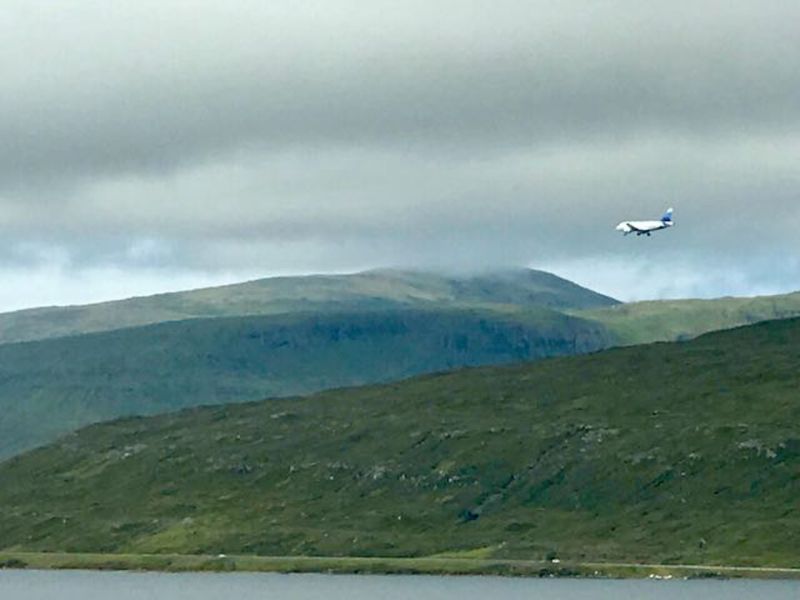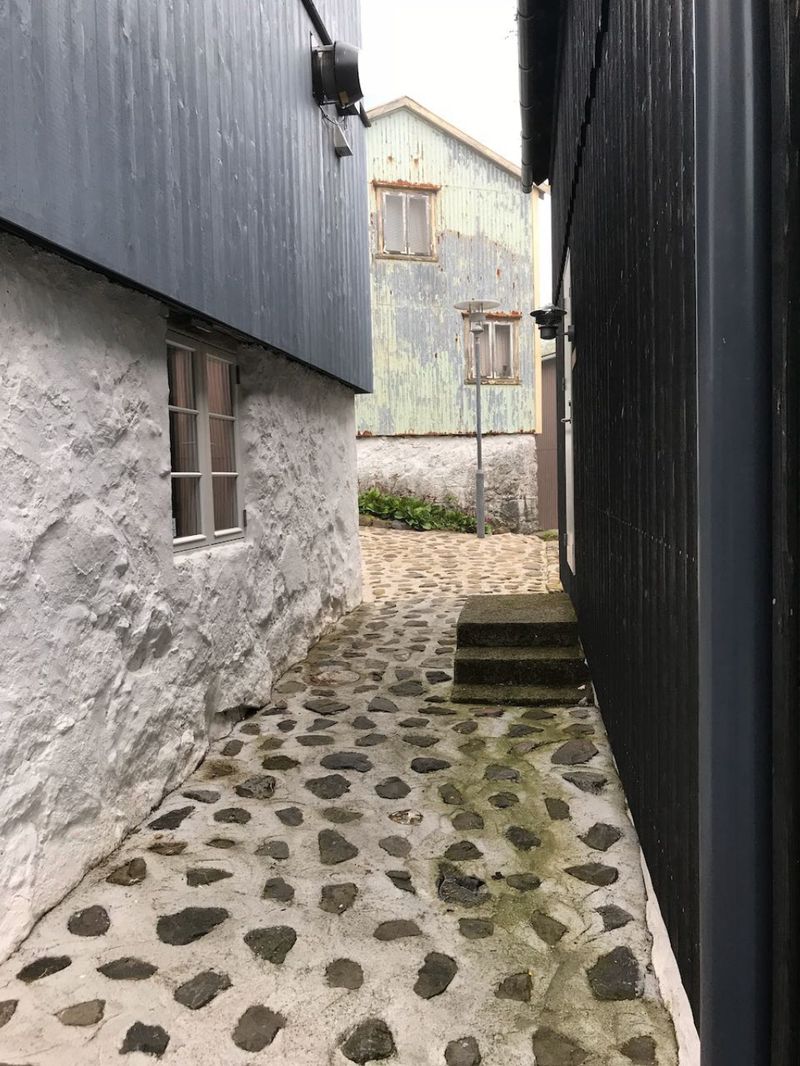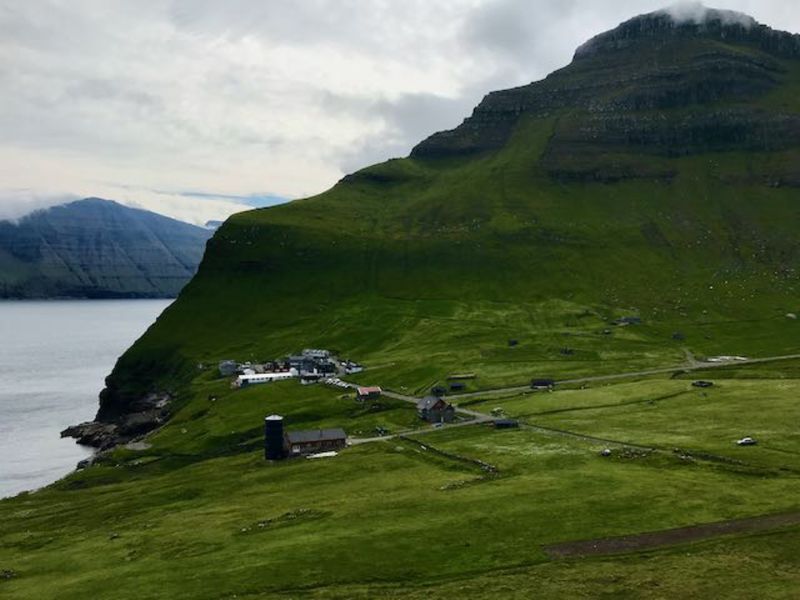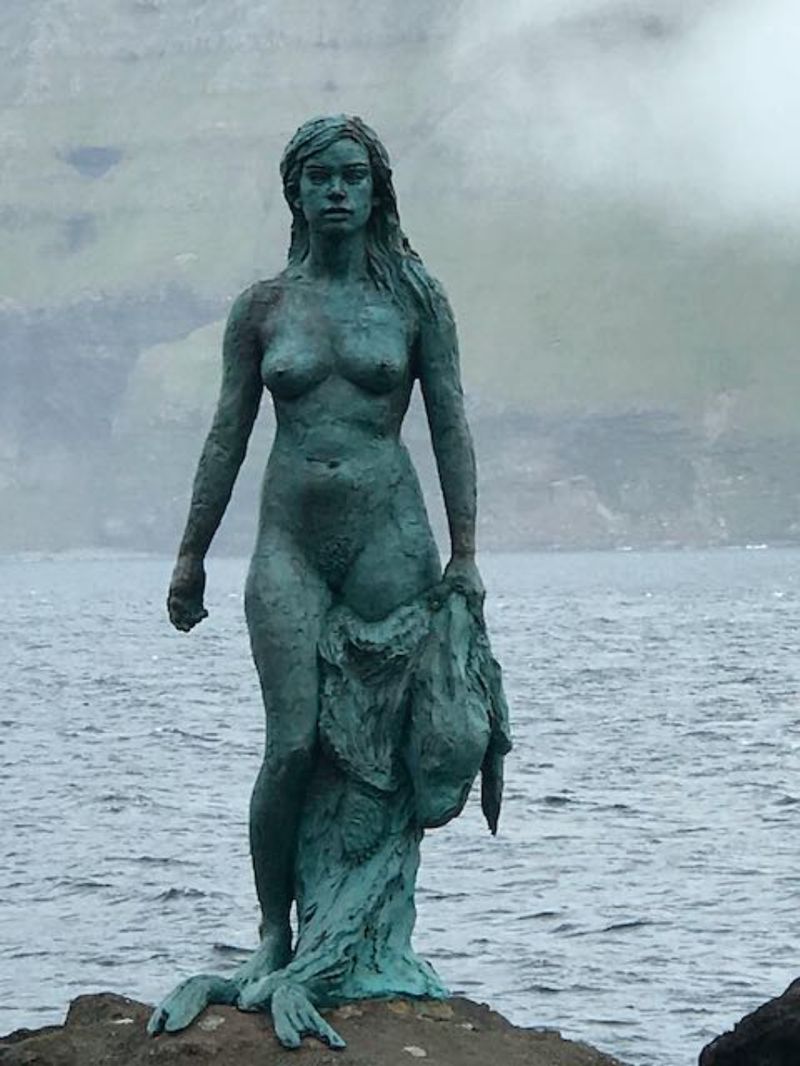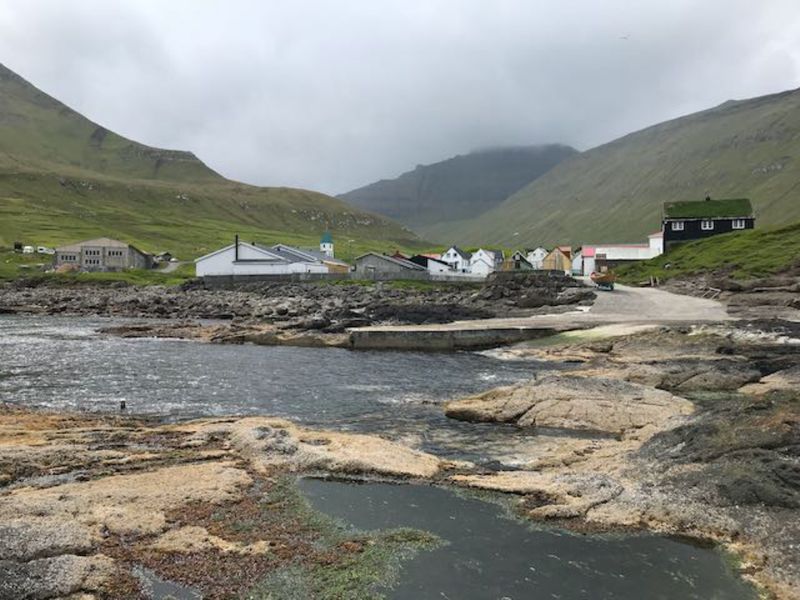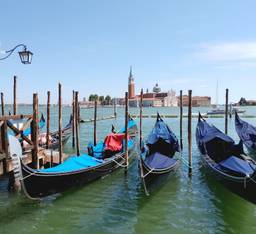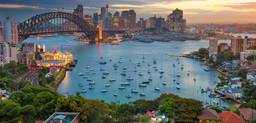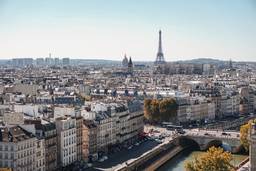1593873000000
1593874800000
Mikladalur - Kópakonan - Selkie Statue
16 Bakkavegur, Mikladalur 797, Faroe Islands
While on the island of Kalsoy, a visit to the village of Mikladalur (population 44) is a must - to see the Selkie Statue - "Kópakonan". Mygledal in Danish means "Great Valley" and Mikladalur is the Faroese equivalent.
The statue at Milkadalur was erected in August 2014 to commemorate the legend. A 450 kilogram bronze statue, it is set on the rocks and designed to withstand 13 metre waves from the sea.
You can walk down to the beach from statue and pass a small waterfall along the way.
Access to the statue is via steps from the village, past the old post office. There are toilet facilities in the village for visitors.
The legend of Kópakonan is one of the best known folk-tales on the Faroe Islands, but a similar legend can be found across many cultures - from the Faroe Islands, to Scotland and Ireland in the south and Iceland to the north.
In one interpretation, Selkies are mythological beings who can change form from seal to human. In another interpretation, it is believed that seals are incarnations of people who have chosen to die in the sea.
On the Christian festival of the Twelfth Night (the Twelfth day of Christmas, and the start of Epiphany), it is said that the seals come onto land and transform back into humans. They shed their seal skins and celebrate by dancing in the human form.
In this Faroese interpretation of the legend, a young gentleman who was a farmer, decided that on the Twelfth Night he would go see the selkie dancing for himself, down on the beach. He becomes obsessed with one of the selkie girls dancing and desires her for himself. In order to prevent her returning to the ocean, he hid her seal skin. As the evening of selkie dancing came to a close, he approached the girl to convince her to marry him. To force the marriage, he put the seal skin in a locked chest, to which only he had the key.
Years passed, and together, they raised several children. One day, the young farmer went out fishing on his boat. All of a sudden, he realised that he had forgotten his key to the locked chest. Panicked, he raced back to shore, but alas, it was too late - his selkie wife had found the key, unlocked the chest, retaken her seal skin, and swam out to sea.
In order to prevent harm to the children, the selkie woman had put out the fire, and removed anything sharp.
The men of the village of Mikladalur liked to hunt seals for food - and one day they made plans to set off on an expedition down to one of the local caverns. In a dream, the selkie woman appeared to the farmer to warn him not to attack a seal bull that would be lying at the entrance to the cave - for that was her seal-husband, nor two seal pups (Hárek and Fredrik) that would be deep inside the cave - for those were her children.
Alas, the farmer did not relay his dream to his compatriots, and on the day of the hunt, all of the seals in the cave were slain. The farmer himself was presented with the flippers of the two pups, as his share of the catch. That evening, as the head of the great bull seal, and the flippers of the young pups were cooked, the selkie woman burst in, and took the form of an angry troll.
The troll passed a curse the men of the village of Mikladalur as a revenge, stating that some would fall from the surrounding mountains, and that others would die at sea. This would continue, she said, until the dead numbered enough as to link hands around the entire island of Kalsoy. And with that, there was a crash of thunder, and she was never seen again.
To this day, whenever a local man dies on a mountain or at sea, it is said that this is because there must not yet be enough dead to link men to link hands around the entire island.
Price covers: Entry
Prices for Mikladalur - Kópakonan - Selkie Statue
| Category |
Price |
Restrictions |
| Standard |
Free |
|







